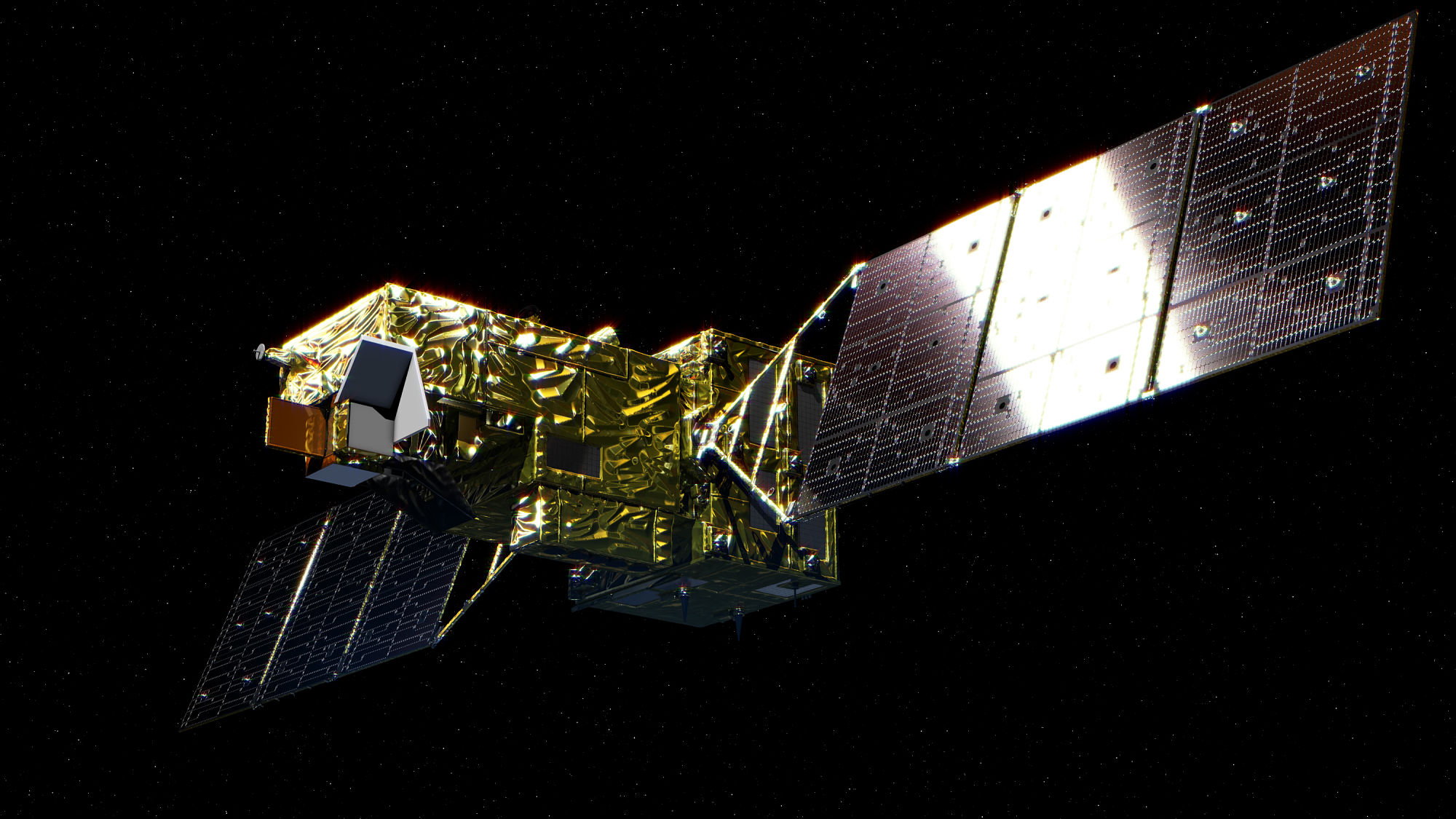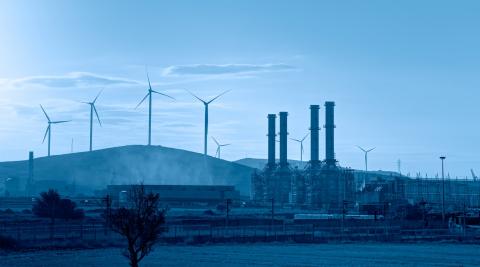Reactions to the detection of record methane concentrations in the atmosphere
Japan's IBUKI greenhouse gas observation satellites (GOSAT) have just announced the detection of a sharp annual increase in the average atmospheric methane concentration in 2021, the largest since 2011. European (ESA) and US (NASA) space agencies, as well as ground stations, have also detected spikes.

GOSAT satellites detect greenhouse gases. / JAXA
Omaira García - Récord emisiones metano EN
Omaira García Rodríguez
Researcher at the Izaña Atmospheric Research Centre, AEMET
The atmospheric concentrations of CH4 observed this autumn/winter represent a maximum in the series of measurements available to date. These maximum values have been observed both from space platforms, thus affecting the entire atmospheric column, and at surface level, as is the case of the Izaña Global Atmospheric Watch station (Agencia Estatal de Meteorología), which belongs to the observation programme of the World Meteorological Organisation.
At the Izaña Observatory, the monthly averages of CH4 surface concentrations recorded during October (1940 ppm), November (1959 ppm) and December 2021 (1952 ppm) are the highest ever since the greenhouse gas observation programme began in 1984.
It is too early to assess the causes of these increases, but studies are currently focused on analysing possible anomalies in the balance between emissions from biological sources and fossil fuels, and their chemical destruction in the atmosphere. However, some preliminary work suggests that anomalous warming of the westernmost part of Siberia and its sea ice may be releasing anomalous CH4 emissions into the atmosphere associated with the melting of permafrost in these areas.
The climatic effect of these anomalous CH4 emissions will depend on their duration, i.e., whether they are one-off emissions or a significant and permanent change in observed trends. In the latter case, they may contribute to the observed warming, especially in the medium term.
Marc Guevara - Récord emisiones metano EN
Marc Guevara Vilardell
Postdoctoral researcher in the Atmospheric Composition Group, Department of Earth Sciences at the Barcelona Supercomputing Center - National Supercomputing Centre (BSC-CNS)
This is the largest measured annual increase since 2011 and is highly significant considering that the past two years have seen an economic (and in principle anthropogenic emissions) slowdown caused by the response to the coronavirus pandemic. Despite this slowdown, methane levels continue to rise relentlessly.
CH4 remains in the atmosphere for a shorter period of time than CO2 (about 10-12 years) and is considered a short-term climate forcer. Although its emissions are lower than CO2, its global warming potential (ability to trap heat in the atmosphere) is 28-34 times higher. The observed annual increase in methane concentrations is therefore a very negative impact on the fight against climate change.
At this stage, it is very difficult to give a precise explanation as to why this peak is occurring. Specific studies will be needed to analyse different factors affecting global methane concentrations in the atmosphere, such as changes in the different emission sources (biological and anthropogenic) and potential variations in the chemical processes responsible for removing methane from the atmosphere. The causes are likely to be a combination of all these elements.
As an illustration, the European Space Agency (ESA) recently published a news item suggesting that during 2020 and in a large oil and natural gas production area in the USA, CH4 emissions had increased compared to the previous year. One possible explanation for this could be that, as a result of lower demand for natural gas in the industrial sector due to covid-19, natural gas is burnt, leading to higher methane emissions in this area. I repeat that this example is only illustrative and does not pretend to explain the causes of the observed peak, but there are surely multiple reasons that will have to be analysed during the following months.
J. Fidel González Rouco - récord emisiones metano EN
J. Fidel González Rouco
Research professor at the Institute of Geosciences, IGEO (CSIC-UCM)
In numbers, this record methane emission is important because methane has increased by about a factor of 2.5 since pre-industrial levels. Its concentration stabilised during the first half of the 2000s and has continued to grow since then (about 63 ppb in the period 2011-2019). In the last three years its growth has accelerated despite the pandemic.
In terms of environmental impact, it is important because the increase in methane leads to increases in tropospheric O3, which is relevant for pollution and health, and in stratospheric water vapour, which also influences the radiative balance.
Methane emissions contribute to global warming. The contribution of methane to the atmosphere is smaller than that of CO2, but its relative effect per unit is larger (one tonne of methane is equivalent to almost 30 tonnes of CO2 in its radiative effect). It has no immediate short-term implications but is relevant to the achievement of net zero emissions targets by the middle of this century.
Rising CH4 levels contribute to global warming and must be taken into account in emission reduction strategies. It does not facilitate them because part of methane emissions are of natural, not anthropogenic, origin.
The causes of this recent acceleration in concentrations are undoubtedly due to an increase in emissions. The specific origins of these emissions are under study. However, several natural and anthropogenic factors contribute. Temperatures in the Arctic and precipitation in the tropics contribute to inter-annual variations with emissions from wetland areas where decomposing material is present. The most likely causes of growth in the last decade are agriculture and livestock, which have seen increases in emissions in the last decade, as well as oil and natural gas production, including losses from leaking pipelines in the transport of oil and natural gas.



